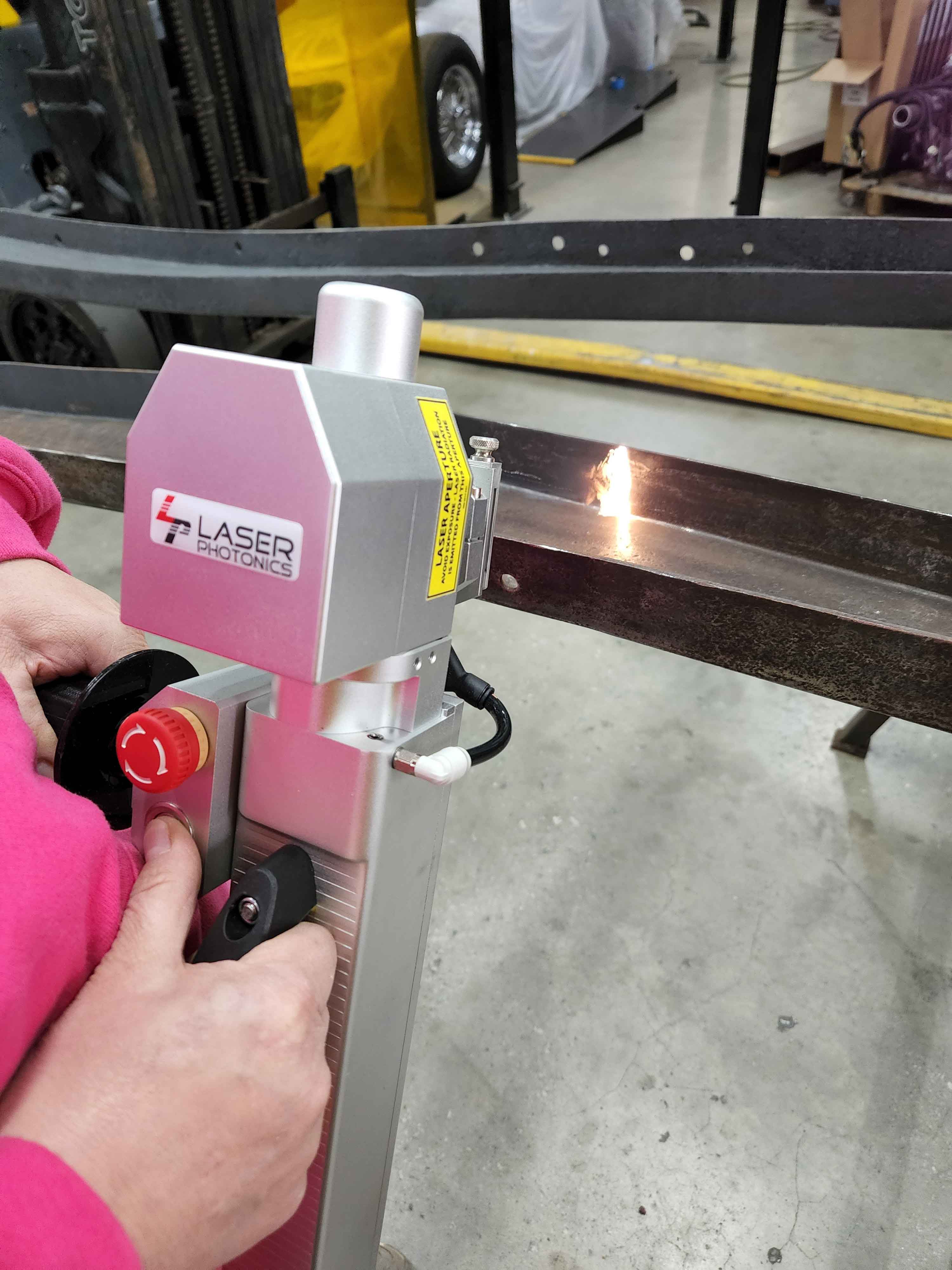How It Works
What Is Laser Ablation?
The term "laser" is an acronym that stands for "Light Amplification by Stimulated Emission of Radiation." Lasers work as a result of resonant effects and the output is referred to as a coherent electromagnetic field.
Laser ablation is a way to use lasers to remove dirt, grime, oils, chemicals, paint and other particulates on multiple sufaces, including metals, plastics and wood substrates without damaging the original surface.
Unlike media blasting, which requires extensive site preparation and setup, costly consumables and time-consuming cleanup, lasers remove particulates cleanly, safely and quickly.
A single laser technician is simply a better solution to physical and chemical cleaning processes with greater control and precision. It’s environmentally safer than using costly consumables required by media blasting solutions.
How Laser Ablation Works
Laser ablation, or photoablation (also called laser blasting), removes material from a solid (or occasionally liquid) surface by irradiating it with a laser beam. At low laser flux, the material is heated by the absorbed laser energy and evaporates or sublimates, requiring no cleanup.
As stated, a laser's light absorbs contaminants, changes their state to a gas and vaporizes it — without damaging the substrate. Industrial laser cleaning is effective for:
- Prepping surfaces for bonding
- Prepping surfaces for multiple types of coating
- Decontamination in the nuclear industry
- Surface prep for non-destructive testing
- Prepping materials for welding/brazing (both pre-treatment and post-treament)

 A Greener Solution
A Greener Solution
Environmentally safer than using costly consumables required by media blasting and chemical solutions.
Have questions regarding a unique challenge, but no time to fill out our contact form? No problem! Click the link below and send us an email, or give us a call! Our laser techs are ready to discuss any questions regarding laser and vibratory cleaning technologies.
Laser Ablation Parameters
Laser ablation equipment uses the same machines as other laser techniques, but leverages different parameters of the machine for application optimization. Parameter considerations include:
- Beam Quality
The beam quality factor determines the brightness, or the radiance of a laser beam.
- Laser Power
Laser power controls the amount of energy absorbed into the particulate. In general, the bend angle increases with an increase in laser power, attains a peak, and then decreases with further increase in the laser power.
- Focal Distance
Simply put, a laser's focal distance is the distance from the lens to the point at which the laser beam converges.
-
Wavelength
All laser machines work with different wavelengths. There are two options: fiber laser for metals and CO2 for plastics and other organic materials.
- Beam Diameter
The larger a laser's beam, the more dispersion. Laser ablation equipment uses a smaller, more concentrated beam, which is why Southeast Laser Ablation Services leverages the 200w laser cleaning machine.
- Pulse Length
h = c * t , where t is the duration of the transmitted pulse, c is the speed of light, h is the length of the pulse in space. The 200W laser cleaning machine used at Southeast Laser Ablation has 200,000 pulses per second, each pulse will deliver 2mJ of energy.
- Pulse Frequency
Pulse frequency is the number of cycles produced across the gap in 1s. The higher the frequency, finer is the surface finish that can be obtained. With an increase of number of cycles per second, the length of the on-time decreases.
- Number of Passes
Different particulates and base materials (different types of wood and metals) require a different number of passes to complete the required task. Multiple passes are required for certain base materials to ensure no damage to the substrate while effectively removing particulates. Some materials can easily be cleaned in as little as a single pass.
- Scanning Speed/Pulse Spacing
Scanning Speed/Pulse Spacing is time between corresponding points of successive pulses and is often referred to as pulse interval.